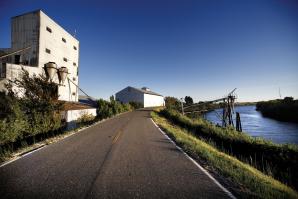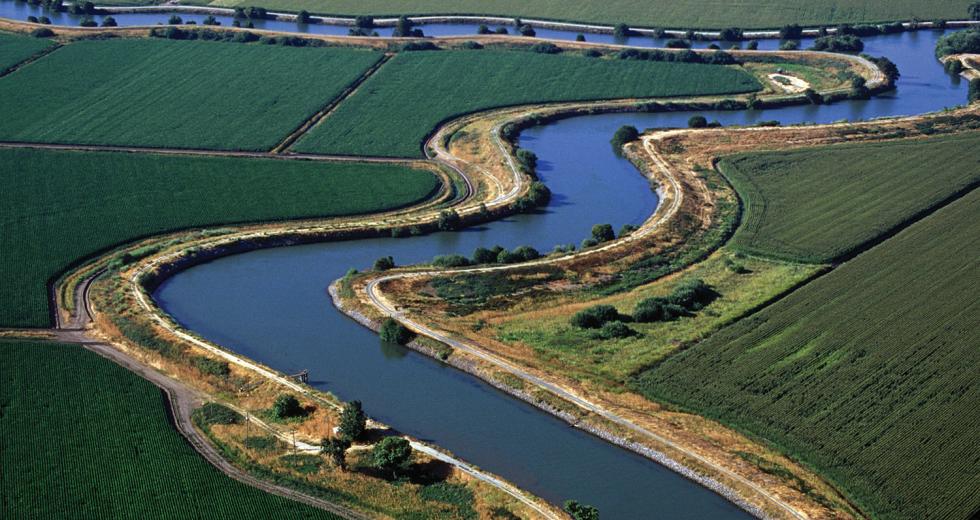It’s been about 20 months since lawmakers and former Gov. Arnold Schwarzenegger breathlessly announced a historic agreement called the Sacramento-San Joaquin Delta Reform Act of 2009, an ambitious plan to overhaul the state’s antiquated water system. Much has changed since then, but much more is still on the way.
The biggest change has been the weather; as the first large rain and snow year since 2005 prompted Gov. Jerry Brown to declare the statewide drought over in March. The big snowpack, which the California Department of Water Resources says peaked at 165 percent of normal snow-water content in April, has also ensured that downstate communities will get their largest water allotment in years, up to 100 percent in some areas.
Not surprisingly, one thing that hasn’t changed is the usual turf and money battles that mark anything involving California water. The ink from Schwarzenegger’s signature on the five-bill reform package was barely dry before whispers began circulating that the $11.14 billion bond proposal needed to fund the â?¨plan was in danger. Faced with a crushingly bad economy and subsequent poll numbers that showed little voter support for the bond measure, Schwarzenegger and lawmakers abruptly switched gears last August and pushed the vote to November of 2012.
But the bond issue is only one part of the complex process of reconfiguring how the state manages the Delta. Of more immediate concern to California water agencies is the impending Delta Plan, the omnibus management strategy by the Delta Stewardship Council, the oversight agency created by the reform act to ensure the state achieves its equal goals of water reliability for downstate users and environmental sanctity for the Delta. Although the Delta Plan is still under construction, with a completion deadline of January, it already has water managers statewide crying foul. Critics accuse the council of turning itself into a regulatory body with far-reaching authority over the sacred cow of local control: land and water-use decisions.
It’s not an unfounded fear. According to the law, the council has two options for moving the state toward its co-equal goals. The first is devising specific policy recommendations for state or local officials with the understanding that only those officials or agencies have power to implement them. The second, and by far the most worrisome to many stakeholders, is for the council to establish its own rules for “covered actions,” those which the law says fall under its purview. This is where the water gets murkier.
The question is just how far does that authority reach? The law provides five criteria for defining a covered action, most notably that the project in question — be it a water conservation program or a new housing tract — must “occur in whole or in part within the Delta or the Suisun Marsh,” the specific areas over which the council has authority. But to the consternation of many local water managers, the criteria also includes projects that “will have a significant impact on achievement of one or both of the coequal goals or the implementation of government-sponsored flood control programs.”
In the eyes of the council, that could mean virtually any project within the Delta watershed, which begins at the tip of the Sacramento River in the northeast corner of the state at the Oregon border and rambles as far south as Fresno. But the council’s reach would not stop there. It would also include the bulk of the San Francisco Bay Area as well as the massive downstream regions in Southern California that draw their water from through-Delta flows. In all, potentially two-thirds of the state’s waterways would fall under the council’s regulatory control, in theory giving it the power to regulate a significant amount of development outside the actual Delta.
That possibility has drawn a crescendo of opposition from both
water agencies and statewide business interests, from power
players like the California Chamber of Commerce and the
California Building Industry Association to small regional
entities like the Fair Oaks Water District in Sacramento County.
In April, almost 60 representatives of these organizations signed
a protest letter sent to the council by the Association of
California Water Agencies. With approximately 450 member
agencies, the association is the largest of its kind in the
nation.
“This is not really a debate about water. It’s about economic development.”
John Woodling, executive director, Regional Water Authority
“We are really concerned about the direction the Delta Stewardship Council is heading,” says the association’s Executive Director Tim Quinn. “They really want to be a regulatory force at the retail-water supply level.”
The council’s proposal has drawn a similar rebuke from the Delta Counties Coalition, a group of five Delta counties — Contra Costa, Sacramento, San Joaquin, Solano and Yolo — that collaborate on water issues.
“This situation with covered actions has the potential to impact a great deal of the state,” says Michael Peterson, a spokesperson for the coalition and civil engineer who’s recently been appointed director of the Sacramento County Department of Water Resources. “We need to be able to know how this is going to effect our land and water use decisions for the long run.”
As always, those decisions equate to dollars and cents.
“This is not really a debate about water. It’s about economic development,” says John Woodling, executive director of the Regional Water Authority in Citrus Heights, one of the water managers who signed the Association of California Water Agencies letter.
Former Sacramento Mayor Phil Isenberg, who now chairs the Delta Stewardship Council, to date has not had much of a sympathetic ear to those complaints.
“Their position has been pretty clear,” he says. “They are basically saying, ‘I don’t know what it is I’m going to do, but I want you to tell me it’s not a covered action.’”
Isenberg laughs at that but says he is serious in carrying out what he sees as the council’s directive to protect the Delta’s “unique characteristics, including its agriculture.” He says there are about five major commercial projects in the San Joaquin Valley that could be negatively impacted by the Delta Plan. How many more could be impacted down the line is a significant unknown. But in that regard, he says the answer to most questions is fairly obvious.
“You have to ask yourself, ‘Does the water that comes into the Delta or is taken from the Delta downstream have anything to do with the health of the Delta?’ I think the answer is a pretty obvious ‘yes,’” he says.
For all the usual antagonism over such issues, the Regional Water Authority’s Woodling says he is still hopeful the council’s final plan will be workable for most parties. He even cites a positive, noting the controversy has forced statewide water managers to stay actively involved in the reform process, not only with the Delta Stewardship Council but with the recently revived Bay Delta Conservation Plan, which could eventually be melded into the council’s Delta Plan. In its current form, the BDCP calls for building either a tunnel or peripheral canal underneath the Delta to ferry water south.
“This whole thing has helped to coalesce water agencies to determine what they really want,” he says. “At the very least, we’re certainly â?¨engaged in the new game that is being played.”
Recommended For You

Troubled Waters
Will the state build or falter on the legislature's historic compromise?
It has been almost a year since California lawmakers reached an agreement on the most comprehensive overhaul of the state’s water management system in more than four decades.

Levee Over Troubled Waters
Paying for repairs just got harder
It’s a calm, clear day on West Sacramento’s South River Road, a meandering two-lane route that runs atop a levee buffering houses and farmland from the placid Sacramento River. It’s hard to envision the chaos that would ensue if the great dirt barrier were to burst, pouring millions of gallons of water into adjacent homes and businesses, but that nightmare scenario just got harder to prevent.



